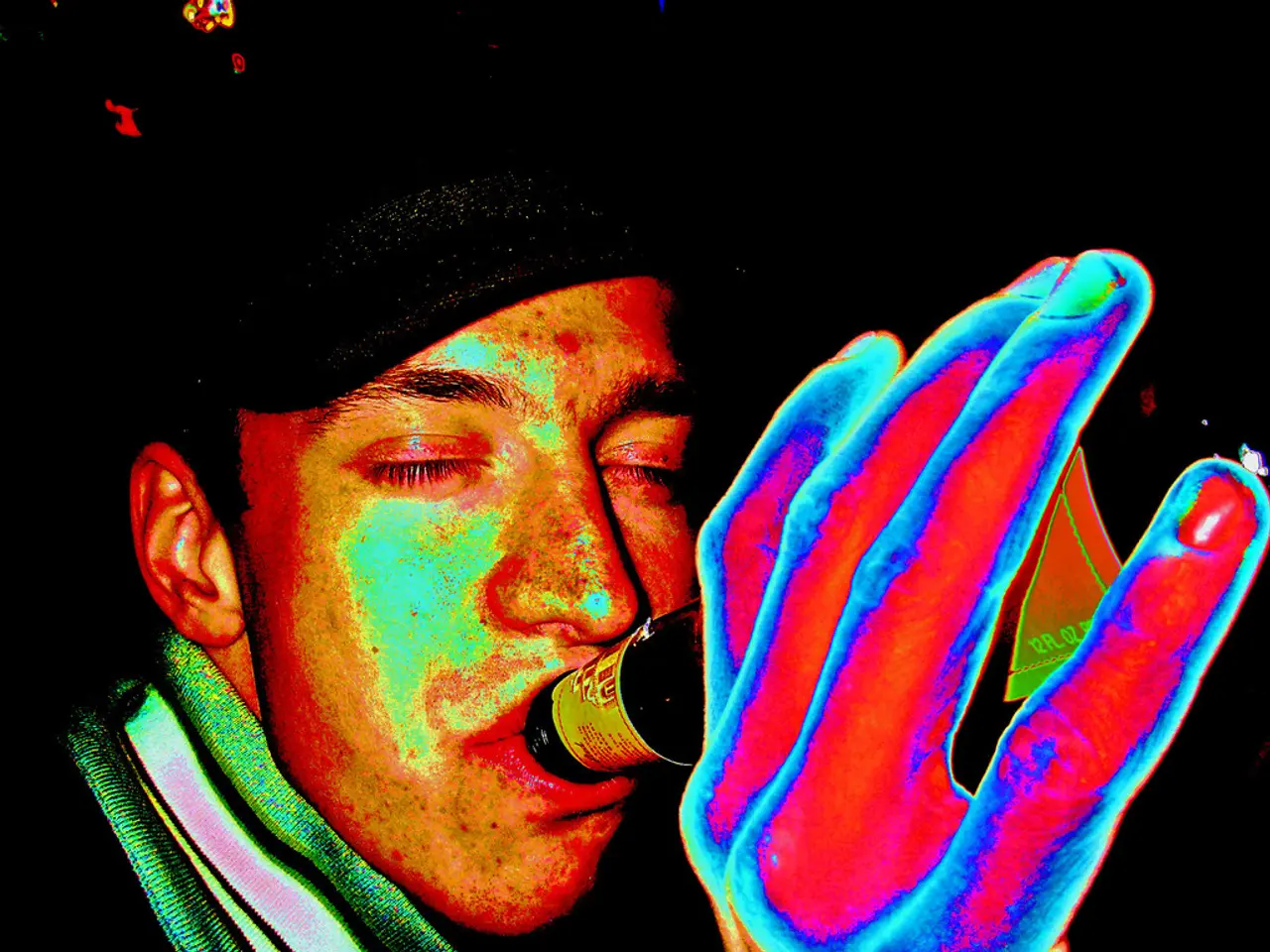Alcohol Aftereffects Explored: Understanding Symptoms, Triggers, and Additional Details
Alcohol use disorder (AUD) can have far-reaching effects on an individual's health, including the development of various health complications such as liver disease, cancer, stroke, dementia, heart disease, and other conditions. One of the lesser-known but significant signs of AUD is the occurrence of cerebellar tremors and hangover shakes.
Cerebellar Tremors: The Root Causes
Cerebellar tremors associated with AUD are primarily caused by alcohol-induced damage and dysfunction of the cerebellum, a vital part of the brain responsible for motor coordination and fine tuning of movements. This damage is due to a combination of factors, including ethanol excitotoxicity to Purkinje cells, cerebellar degeneration, disruption of cerebellothalamocortical circuits, alcohol-induced neuroinflammation, fluctuations in metabolic and neurochemical homeostasis, and alcohol withdrawal effects.
Hangover Shakes: A Warning Sign
Hangover shakes, also known as alcohol withdrawal tremors, are a minor symptom that some people experience after they stop drinking alcohol. They are a result of the nervous system trying to adjust to the absence of alcohol, which can cause hyperexcitability. While they might seem harmless, hangover shakes can be a warning sign of more severe alcohol withdrawal symptoms to come, such as Delirium Tremens (DT).
Preventing and Managing Hangover Shakes
The most effective way to prevent hangover shakes is to avoid alcohol use. However, for those struggling with AUD, reducing alcohol consumption can lower the risk of experiencing these symptoms. Maintaining hydration and stable blood sugar by consuming non-alcoholic drinks and food containing carbohydrates may also help.
Resting, hydrating, consuming carbohydrates, taking magnesium supplements, and ensuring adequate thiamine intake may provide symptom relief for hangover shakes. If a person often gets hangover shakes, they might want to discuss AUD treatment with their doctor.
Delirium Tremens: A Serious Concern
Delirium Tremens, a potentially life-threatening condition, can occur in severe cases of alcohol withdrawal. DT can lead to death in of cases without treatment, but early diagnosis and treatment decrease the mortality rate to less than 5%. DT can begin as early as 48 hours from a person's last drink and can last as long as 5 days. Symptoms of DT include severe confusion, visual hallucinations, rapid heart rate, perspiration, hypertension, agitation, hyperthermia, seizures, hypertension, hyperthermia, arrhythmias, disorientation, confusion, altered mental status, pneumonia, respiratory failure, and death.
In severe cases of alcohol withdrawal, doctors may use benzodiazepines as the first-line treatment. It is best to contact a healthcare professional for help with severe symptoms or if there is a chance DT can occur.
In conclusion, while hangover shakes might seem like a minor inconvenience, they can be a sign of AUD and other conditions. If you believe you may be experiencing alcohol use disorder or are experiencing tremors regularly, it is crucial to speak with a healthcare professional.







